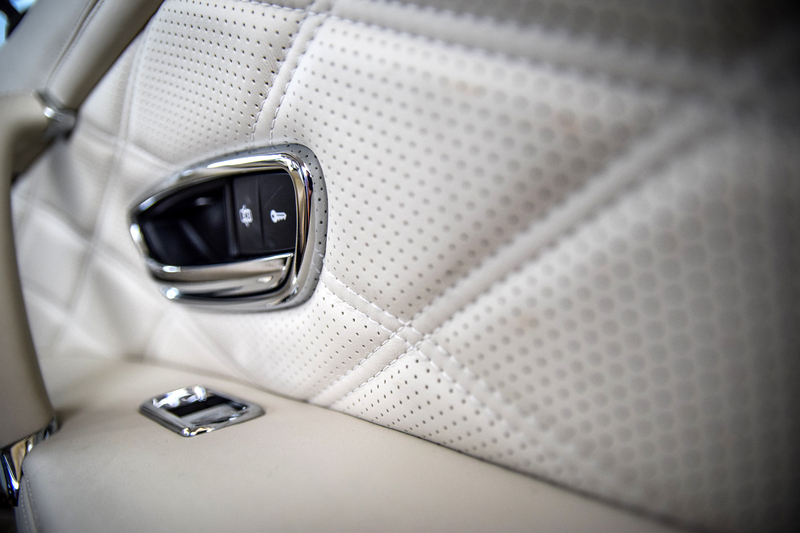Sparkling Secrets: Essential Jewellery Cleaning Techniques
Posted on 23/09/2025
Sparkling Secrets: Essential Jewellery Cleaning Techniques
Everyone loves the feeling of slipping on a beautifully sparkling piece of jewellery -- be it a diamond engagement ring, antique silver brooch, or a string of lustrous pearls. Yet, even the most exquisite jewels lose their luster over time. Dust, lotions, oils, and daily grime can diminish their brilliance. Fortunately, with proper jewellery cleaning techniques, it's easy to revive your precious adornments and keep them gleaming.
Why Regular Jewellery Cleaning is Essential
Over time, everyday exposure to sweat, soap, skin oils, makeup, and environmental pollutants can dull the dazzle of even the most magnificent pieces. Jewelry care and cleaning isn't just about aesthetics--it also extends the life of your treasures by preventing metal tarnish, gemstone scratches, and buildup that can loosen settings. Regular maintenance ensures your jewellery remains hygienic and beautiful.

Understanding Different Types of Jewellery and Their Cleaning Needs
Before diving into cleaning methods, it's vital to recognize that not all jewellery is created equal. Different metals and gemstones require distinctive care routines. The methods that restore a diamond ring's radiance might damage antique pearls or a vintage opal brooch.
Metals
- Gold: Highly resistant to tarnish, but can accumulate grime and lose shine.
- Silver: Prone to tarnishing and reacts with sulfur compounds in air and cosmetics.
- Platinum: Durable, but susceptible to scratches and loss of polish.
- Others: Copper, brass, and alloys have unique concerns, especially regarding patina and corrosion.
Gemstones
- Diamonds: Extremely hard, can withstand gentle scrubbing, but require regular cleaning for maximum sparkle.
- Sapphires & Rubies: Hardy stones, but typically set in delicate settings.
- Pearls & Opals: Porous and soft; very sensitive to chemicals, moisture, and abrasion.
- Emeralds: Often treated with oils; should not be soaked or exposed to harsh cleaners.
Essential Jewellery Cleaning Techniques for Maximum Shine
1. The Gentle Soap and Water Method
For most fine jewellery--especially gold, platinum, diamonds, and sapphires--the classic soap and water method works wonders.
- Fill a bowl with lukewarm (not hot) water and add a few drops of gentle dish soap (avoid antibacterial or harsh cleaners).
- Place your jewellery in the solution and let it soak for 15-20 minutes.
- Using a soft-bristled toothbrush, gently scrub intricate details and settings.
- Rinse under lukewarm running water and pat dry with a lint-free cloth.
Tip: Plug the drain if cleaning over a sink!
2. Baking Soda and Aluminum Foil for Silver Jewellery
Silver is notorious for tarnishing, but the age-old baking soda method removes tarnish naturally and efficiently. Here's how:
- Line a bowl with aluminum foil, shiny side up.
- Add your silver pieces, ensuring they touch the foil.
- Sprinkle a heaping tablespoon of baking soda and a pinch of salt into the bowl.
- Pour hot (not boiling) water to submerge the jewellery. Bubbling means the reaction is working!
- Leave for a few minutes, then remove, rinse with cool water, and buff with a soft cloth.
Note: This method is not suitable for pieces with glued components or precious stones--only solid silver items!
3. Ammonia Solution for Diamonds and Selected Gems
Diamonds dazzle when free from oil and grime. For occasional deep cleaning, an ammonia solution can offer a brilliant cleanse:
- Mix 1 part ammonia with 6 parts water in a glass bowl.
- Soak jewellery for no more than 1 minute.
- Carefully brush with a baby toothbrush and rinse thoroughly.
- Pat dry; never leave to air dry which can spot the stones.
This method is not for pearls, opals, emeralds, or antique settings.
4. Cleaning Pearls, Opals, and Porous Stones
Delicate gems like pearls, opals, turquoise, and amber are easily damaged by immersion and chemicals. Here's a safe approach:
- Wipe each bead or stone gently with a soft, damp cloth (microfiber works best).
- If necessary, use a mixture of lukewarm water and mild soap applied to the cloth--not the jewellery.
- Allow to air dry flat to avoid stretching silk (for pearls).
Never: Soak, scrub, or expose to ultrasonic cleaners. Store away from cosmetics and moisture.
5. Commercial Jewellery Cleaners: When and How to Use Them
There are endless commercial jewellery cleaning solutions on the market. While convenient, always:
- Read labels carefully--ensure suitability for the metal and stones in your piece.
- Use as directed; don't over-soak or over-clean which can damage finishes.
- Rinse thoroughly to remove any chemical residue.
Professional ultrasonic machines can be effective but should be used with caution--only for sturdy pieces (e.g., diamond rings). Never use on fragile or antique jewellery.
Pro Tips for Long-Lasting Sparkle
- Remove jewellery before showering, swimming, exercising, or cleaning with harsh chemicals.
- Store pieces separately--soft pouches or lined boxes prevent scratches and tangling.
- Avoid direct sunlight and moisture, which can cause fading or warping of materials.
- Regularly inspect settings--loose stones risk loss during cleaning and wear.
- Have heirlooms professionally cleaned and checked annually.
With consistent care, your favourite pieces will retain their shine and value for generations.
Jewellery Cleaning Mistakes to Avoid
Even with the best intentions, incorrect cleaning can cause irreparable harm. Always avoid:
- Bleach and chlorine: Both can cause metal fatigue or discoloration; never use for cleaning precious jewellery.
- Toothpaste or baking soda scrubs: Although mild abrasives, these can scratch metals and gemstones, especially on softer surfaces.
- Paper towels: These are abrasive enough to scratch and should be replaced with microfiber or jewelry cloths.
- Soaking delicate or glued items: Water can dissolve adhesives and weaken threads, especially in antique or costume pieces.
- Ignoring professional care for complex pieces: Intricate designs or settings often require specialized attention.
Avoiding these mistakes is vital for jewellery preservation and preventing damage.
DIY vs. Professional Jewellery Cleaning: When to Seek an Expert
While at-home jewellery cleaning techniques work wonders for regular maintenance, certain scenarios absolutely require an expert's touch:
- Heirloom or vintage jewellery, which may have fragile, non-replaceable elements
- Pieces with obvious damage: bent prongs, cracks, missing stones
- High-value items before a major event or appraisal
- Watches, mechanical jewellery, or designer brands requiring warranty-friendly cleaning
Professional jewellers use specialized equipment (ultrasonic cleaners, steamers) and have the expertise to check settings, appraise, and polish safely.
Jewellery Cleaning FAQs
How often should I clean my jewellery?
For most pieces, a monthly cleaning suffices. Rings worn daily can be cleaned every two weeks. Store rarely worn items in airtight containers to minimize tarnishing and dust.
Is ultrasonic cleaning safe for all jewellery?
Not always. Diamonds and sapphires can usually withstand, but porous stones, pearls, antique jewellery, and glued settings should never go into ultrasonic machines.
Can I clean costume jewellery at home?
Yes, but with caution. Costume jewellery is often made with base metals and adhesives. Avoid soaking -- instead, wipe gently with a barely damp cloth and dry immediately.

Final Thoughts: The Sparkling Secret to Beautiful Jewellery
Proper jewellery cleaning is the cornerstone of prolonging both the beauty and lifespan of your cherished treasures. By understanding the unique characteristics of your pieces, using safe at-home cleaning methods, and knowing when to consult a professional, you ensure that every gem, ring, and necklace stays brilliant for generations.
Adorn yourself with confidence, knowing the sparkling secrets to everyday jewellery care! Remember, a sparkling jewel is more than a status symbol--it's a story, a memory, and a statement. Keep yours shining bright with these essential jewellery cleaning techniques.
Summary: Essential Tips for Glittering Jewellery
- Understand your jewellery materials and their specific needs
- Use safe, non-abrasive cleaning solutions and tools
- Clean regularly but avoid overdoing to prevent wear
- Store jewellery properly to minimize damage and tarnish
- Seek professional help for valuable, antique, or damaged items
Let your jewellery tell its story with unyielding shine and grace--a little attention goes a long way!








